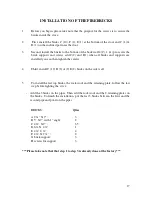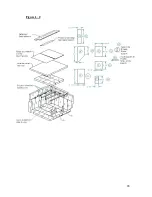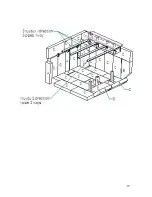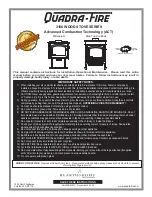
4
If the appliance starts to glow red, over firing is happening. Do not add fuel. Immediately
close the doors and the air intake of the appliance until everything becomes normal again.
Do not charge the appliance beyond the firebricks height.
Ashes must be evacuated frequently, remove it with a small steel shovel.
Very hot while in operation. Keep the children away. Can cause burns by contact.
Considering the need of air for the combustion, a window or a door must be half opened
sometimes (fresh air drainage) to balance the pressure in the house, especially if:
-
A fan already evacuates air towards outside (kitchen, bathroom.)
-
You want to avoid smoke spillage when lighting the appliance and when reloading
the wood.
It is recommended to have a smoke detector near the appliance.
You should contact your municipal or provincial fire department to have knowledge
of the procedure to be followed in case of a chimney fire. Think of an emergency
plan
.
In case of a chimney fire:
-
Hermetically close the doors and the air intakes.
-
Water the combustible material adjacent to the chimney.
-
Ring the alarm, evacuate the house if necessary and call the firemen.
-
Never touch the pipes until the fire is not completely extinct.
-
Do not use the chimney until it has been inspected or repaired.
Keep all the doors closed while the appliance is in function. Frequently verify the
ceramics cords; they must always be in good condition.
The chimney pipe should not pass close to water, gas or oil pipes, or close to electric wire
or other types of conduits, of combustible materials in the roofs, the attics, the walls or
the floors. If you have to make it pass through a wall or a part of combustible
construction, do not forget that the installation must be in accordance with the
CAN/CSA-B365. Use at least 12 feet of a 6 inches diameter vertical chimney.
NOTE:
FOLLOW THESE INSTRUCTIONS IN ORDER TO AVOID FIRE HAZARDS,
WOUNDS AND PROPERTY DAMAGES.
Summary of Contents for ULTIMATE
Page 18: ...18 Figure 1 0...
Page 19: ...19...





































